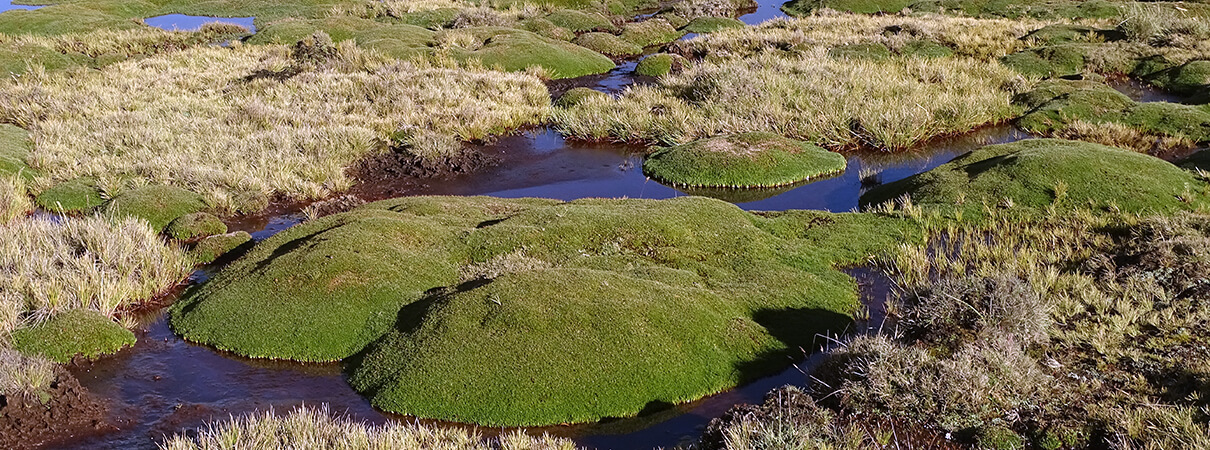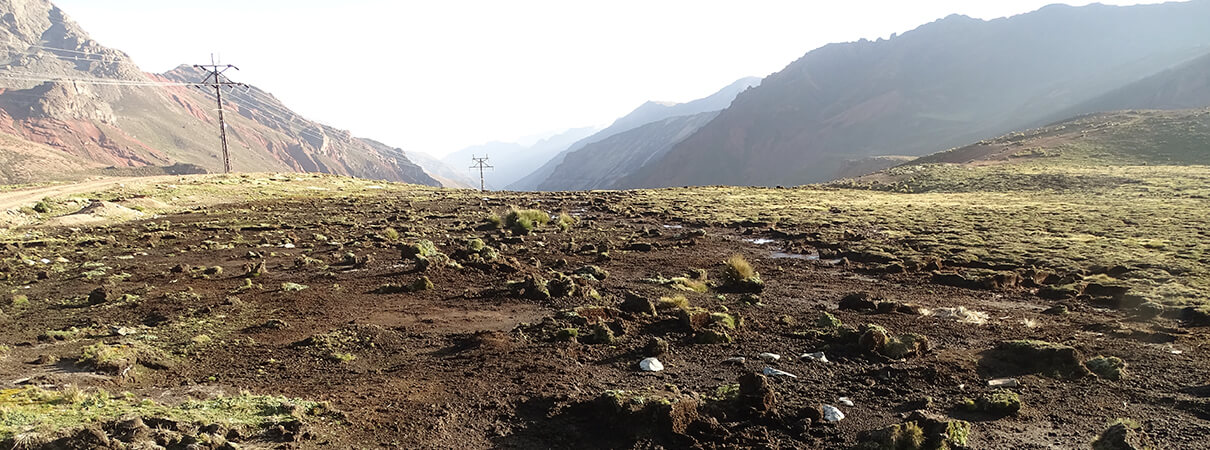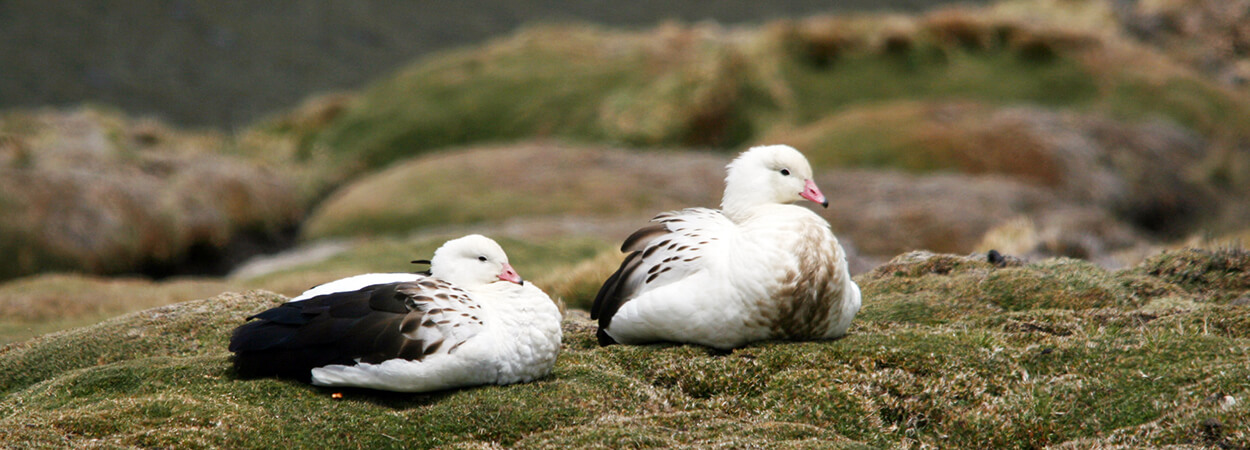High in the Andes, Turf Mining Threatens Rare Birds' Habitat
Of the more than 10,000 species of birds on Earth, less than a quarter of one percent are considered critically endangered. These species are often restricted to unique and rare habitats that are susceptible to human disturbance. One such species, the White-bellied Cinclodes, makes its home high in the Peruvian Andes, in sensitive wetlands known as bofedales.
Now numbering as few as 200 individuals, this boldly colored species looks much like a striking chestnut-and-white mockingbird. The high-elevation wetlands that are its home are highly vulnerable, as I discovered on a recent trip to Peru with colleagues from the environmental nonprofit group ECOAN, an ABC partner. Turf miners are carving up this unique ecosystem and carting it off.

One of the world's most endangered birds, the White-bellied Cinclodes makes its home high in the Peruvian Andes, in sensitive wetlands known as "bofedales." Turf mining is taking a toll on this unique ecosystem. Photo by Tino Aucca/ECOAN
To understand what's at stake, it helps to know more about this unique habitat. Bofedales comprise an ecosystem so stark and sensitive that the effects of peat mining could last for hundreds or even thousands of years. Of the 13 cinclodes species, all found in South America, the White-bellied occurs by far at the highest elevations — between 14,400 and 18,000 feet. At those elevations, scattered at the base of rocky crags and peaks, snowmelt is channeled through isolated valleys, enabling the establishment of what are known as "cushion bogs." These treeless ecological communities are made up of native grasses and moss-like plants called Distichia muscoides, actually a type of rush, that lives in green colonies of millions of individuals yet reaching only half an inch tall.
These colonies endure nightly freezes virtually all year round, burial by snow, prolonged saturation, and intense UV radiation. They form lens-shaped pads, up to several feet across, often separated from each other by crystalline rivulets of alpine snowmelt. The pads form an irregular, expansive carpet of brilliant lime green mixed with high-elevation grasses in a treeless wonderland, all set before the backdrop of the snow-capped Andes.

A view of healthy bofedales, a unique and sensitive wetland in the Peruvian Andes. This habitat is the only home of White-bellied Cinclodes and is also used by Andean Goose, Gray-breasted Seedsnipe, Andean Snipe, White-fronted Ground-Tyrant, Andean Lapwing, the unique Diademed Sandpiper-Plover, and a suite of other species. Photo by Phil Tanimoto
No other bird is tied so exclusively to the bofedales as the White-bellied Cinclodes. In evolutionary time, by capitalizing on these habitats, this species was able to survive better in this sparse setting than by competing with the many species that dominate more productive habitats.
For most of the time since the end of the last ice age, the cushion bogs have grown unimpeded, allowing a slow, steady build-up of peat formed by the dead layer of roots that refuse to decay in the cold, wet bofedal. Today, that peat is the target of illegal miners who chop out great blocks and haul it away in trucks.
Bofedales are legally protected by Peruvian law. Officially, they are recognized as fragile ecosystems where mining, mining exploration, and roads are prohibited. But the laws are not enforced.

Turf mining leaves destruction behind in the sensitive wetlands known as "bofedales" in the Peruvian Andes. We saw three White-bellied Cinclodes — perhaps well over one percent of the global population — trying to survive, as the majority of their turf had already been hauled out. Photo by Phil Tanimoto
Together with my ECOAN colleagues, I recently visited the bofedal near Ticlio Pass, a few hours east of Lima, off the main highway toward Huancayo. We were pretty sure we would find the White-bellied Cinclodes here, because it has long been a reliable site for this species.
We did not expect what else we found. Just across the valley, on the adjacent hillside, there was a large dump truck filled high with rectangular, foot-thick chunks of the ancient turf. A crew of laborers carried a steady stream of turf blocks on their backs, up a steep wooden ramp to the top of the truck, where they piled them ever higher.

Turf miners load trucks with peat removed from nearby wetlands. These chunks of turf are used as a growing medium for houseplants at nurseries in Lima. Photo by Phil Tanimoto
I raised my camera to document this illegal activity and was spotted by the men, who quickly dropped their work and hiked angrily over to me. “No saca fotos” (Don't take photos), they demanded.
I explained that my friends and I were here to watch the local birds. One man exclaimed that there were no birds in the area and that we should go elsewhere to look for birds. It was clear that they knew their activity was illegal and were afraid of being outed. These robbers had no claim to either the land or its resources.
To calm the situation, I said “Hola amigos,” extended my hand, and remarked on the difficulty of their work. “Que duro es tu trabajo!” (“Your work is so tough!”) To my surprise, they shook my hand in greeting. Satisfied that my ECOAN colleagues and I posed no threat, they returned to loading the big truck with turf, and I continued capturing their work on camera.
In the distance, at the edge of the mined-out section of bofedal, we saw three White-bellied Cinclodes — perhaps well over one percent of the global population — trying to survive, as the majority of their turf had already been hauled out. These birds, whose feeding strategy focuses on small arthropods that use the green plants, had been pushed to the edges of the mud to forage.
As a bird conservation specialist, my hackles were way up. I asked my colleagues how this blatant theft of habitat for a critically endangered species could be happening without restriction. I learned that these chunks of turf are used as a growing medium for houseplants, at nurseries in Lima, the massive Peruvian capital of more than 10 million residents. My colleagues pointed to the need for community involvement to prevent this kind of illegal exploitation on community lands. There was no chain across the access road, no sign declaring the turf off-limits to miners.
Mining is not the only threat to the cinclodes' sensitive habitat. To make matters worse, bofedales are often grazed by cows, whose hooves break apart the Distichia pads, leaving muddy holes. Old mining claims owned by large corporations provide a legal avenue for further destruction.
But these obstacles can be overcome. Llamas and alpacas, whose soft feet won't tear up the cushion bogs, can be substituted for cows. Mining companies have shown that they are often amenable to collaborating on conservation projects.

The beautiful Andean Goose is another species that benefits from conservation of the cushion bogs of the high Andes. Photo by Benjamin Skolnik
Witnessing the destruction of the bofedal at Ticlio was a pivotal moment for me. If illegal peat mining is not curtailed, the White-bellied Cinclodes will disappear.
In the coming years, ABC plans to work closely with ECOAN to promote law enforcement, increase community vigilance, and take preventive measures to keep illegal peat miners out of community land.
If successful, ABC's and ECOAN's effort will benefit more than just the White-bellied Cinclodes. The beautiful Andean Goose, Gray-breasted Seedsnipe, Andean Snipe, White-fronted Ground-Tyrant, Andean Lapwing, the unique Diademed Sandpiper-Plover, and a suite of other species, also use these cushion bogs. The White-bellied Cinclodes stands for the fragile beauty of the bofedales, and the bofedales stand for each of the many creatures they shelter.
Philip Tanimoto is an International Program Officer with ABC.


















































